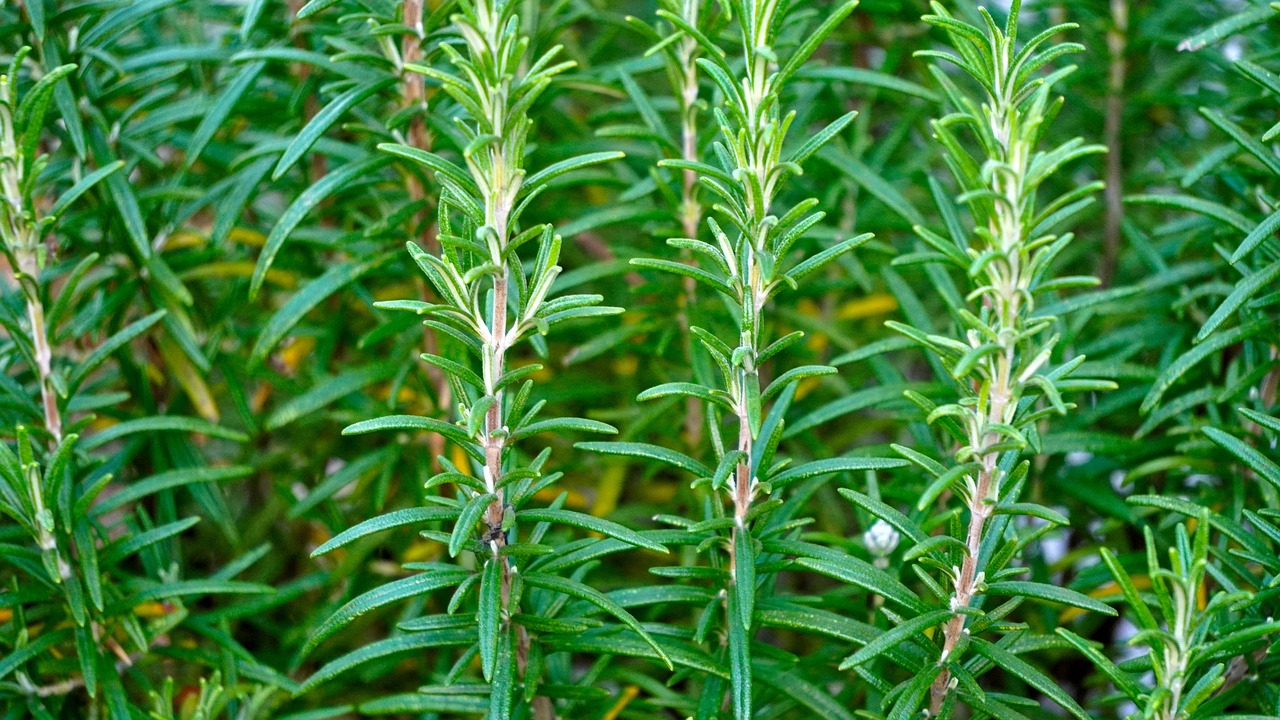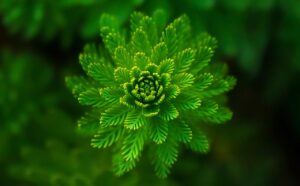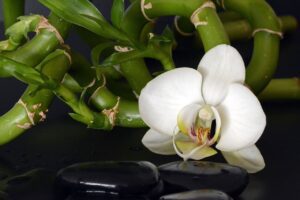Perfumes have been utilized for centuries to enhance personal hygiene, emit an enticing aroma, or even seduce a partner. Today, we are more conscious of the products we use and their effects on ourselves and the environment. This awareness has led to the revival of plant-based perfumery.
Plant-based perfumes use natural plant extracts to create unique fragrances that are both sustainable and environmentally friendly. They also offer a wide range of benefits, including improving mood, reducing anxiety, and promoting relaxation.
In this comprehensive guide, we will explore the world of plant uses for perfume, including natural plant scents and botanical fragrances. We will uncover the science behind scent creation, explore different scent families, and learn about the techniques and processes involved in making perfumes using plant-based ingredients.
Key Takeaways:
- Plant-based perfumes utilize natural plant extracts to create unique and sustainable fragrances.
- They provide a range of benefits, including improving mood and promoting relaxation.
- This guide will explore the world of plant uses for perfume, including natural scents and botanical fragrances.
Understanding Aromatic Plants for Fragrance
When it comes to creating natural plant scents for perfumes, certain plants are known for their fragrance. These are called aromatic plants, which are defined by their ability to produce essential oils that carry the plant’s unique scent.
The fragrant compounds produced by aromatic plants can be extracted through various methods, including steam distillation and solvent extraction. This results in highly concentrated oils, which can be used to create natural fragrances for perfumes and other products.
Common aromatic plants used for fragrance include lavender, rosemary, peppermint, and eucalyptus. These plants have a long history of use in perfumery and are known for their distinct, refreshing scents.
Types of Aromatic Plants for Fragrance
There are a variety of aromatic plants that can be used for fragrance, each with their own unique scent profile. Here are some examples:
| Plant Name | Common Uses |
|---|---|
| Lavender | Calming and relaxing scent, often used in perfumes and aromatherapy products |
| Peppermint | Refreshing and invigorating scent, often used in soaps and body products |
| Rosemary | Herbaceous and stimulating scent, often used in hair and skin care products |
| Eucalyptus | Camphorous and uplifting scent, often used in respiratory and cleaning products |
Other aromatic plants used in perfumes and fragrances include jasmine, ylang-ylang, neroli, and patchouli. Each of these plants has a unique scent profile that can be used to create complex and intriguing fragrances.
By understanding the properties of aromatic plants and their unique fragrance profiles, perfumers can create natural fragrances that are both captivating and sustainable.
Exploring Essential Oils for Perfumes
When it comes to botanical fragrances, essential oils are some of the most essential ingredients in a perfumer’s toolkit. These highly concentrated plant extracts are extracted through a variety of methods, including steam distillation, solvent extraction, and cold pressing.
What makes essential oils so special is their ability to capture the essence of a plant’s natural scent in a highly concentrated form. At the same time, they are incredibly versatile and can be used in a wide variety of perfume formulations to create unique and captivating scents.
Common Essential Oils Used in Perfumery
There are many essential oils used in perfumery, each with its unique aroma and characteristics. Some of the most commonly used essential oils in perfumery include:
- Bergamot: This essential oil has a fresh, citrusy scent and is commonly used in top notes of perfume formulations.
- Lavender: Widely known for its calming effects, lavender essential oil has a floral, sweet scent that is often used in middle notes of perfume formulations.
- Vanilla: The warm, sweet scent of vanilla essential oil is often used in base notes of perfume formulations to provide depth and richness to the scent.
- Peppermint: With its fresh, minty scent, peppermint essential oil is often used in top notes of perfume formulations to provide a cooling, refreshing effect.
- Ylang-ylang: Known for its exotic, floral scent, ylang-ylang essential oil is often used in middle and base notes of perfume formulations to provide a heady, sensual aroma.
Blending Essential Oils for Unique Scents
One of the most exciting aspects of using essential oils in perfumery is the ability to blend them to create an almost limitless range of unique scent profiles. Perfumers often work with a wide variety of essential oils to create complex scent compositions that can stand out in a crowded market.
Creating a unique blend of essential oils requires a deep understanding of the individual notes and their interactions with each other. Perfumers must think about how different scents can complement or contrast with each other and how they interact over time as the perfume dries down.
“The art of blending essential oils is all about finding the right balance between different notes to create a scent that is both harmonious and distinct.”
Ultimately, the goal is to create a scent that captures the essence of the natural plant scents in a way that is both compelling and memorable.
Unveiling Floral Scents for Perfumery
Floral scents are a classic choice for perfumery, lending a romantic and feminine quality to fragrances. But did you know that there are many different flowers that can be used as a source of natural fragrance?
| Flower | Fragrance Notes |
|---|---|
| Rose | Warm, sweet, and slightly spicy |
| Jasmine | Intensely floral, sweet, and exotic |
| Lavender | Herbaceous, floral, and fresh |
| Neroli | Citrusy, sweet, and floral |
Floral scents can be extracted through various methods, such as steam distillation, solvent extraction, and enfleurage. Solvent extraction is commonly used for delicate flowers like jasmine and rose, while steam distillation is used for hardier flowers like lavender and geranium.
In addition to flowers, other parts of plants can also yield floral fragrances. For example, the leaves of the patchouli plant exude a floral scent that is often used as a base note in perfumery.
“Flowers always make people better, happier, and more helpful; they are sunshine, food, and medicine to the soul.” – Luther Burbank
When it comes to natural fragrance sources, flowers offer a diverse range of scents that can add complexity and depth to perfumes. From roses to jasmine, lavender to neroli, floral scents remain a staple in perfumery.
Harnessing the Power of Botanical Fragrance Extracts
Beyond essential oils, plants contain fragrant compounds throughout their various parts, allowing for a wide range of botanical fragrance extracts. These fragrant plant extracts are highly concentrated, making them ideal for use in perfumery. It takes the essence of vast amounts of plant material to produce even a small amount of extract.
One popular example of fragrant plant extracts is rose absolute. This extract is derived from the petals of the rose flower and has a sweet, floral scent that is commonly used in perfumes. Another popular extract is vanilla absolute, which is derived from the pods of the vanilla plant and has a warm, comforting scent.
Other parts of plants are also used to produce fragrant extracts. For example, vetiver oil is derived from the roots of the vetiver plant and has an earthy, smoky scent. Patchouli oil is derived from the leaves of the patchouli plant and has a musky, spicy scent.
The use of fragrant plant extracts in perfumery allows perfumers to create unique and complex fragrance profiles, using a combination of different botanical extracts. These extracts add depth and complexity to perfumes and contribute to the allure of botanical fragrances.
How Fragrant Plant Extracts are Made
There are several methods for extracting fragrant compounds from plants, including steam distillation, solvent extraction, and expression.
Steam distillation is the most common method used to extract essential oils from plants. It involves using steam to extract the fragrant compounds from the plant material, resulting in a concentrated essential oil. Solvent extraction involves using a solvent, such as hexane, to extract fragrant compounds from the plant material. The resulting extract is then separated from the solvent. Expression involves using pressure to extract fragrant compounds, such as citrus oils, from the rind of the fruit.
Once extracted, these fragrant plant extracts can be incorporated into perfumes in various ways, including as a top note, middle note, or base note. Top notes are the initial scents that are perceived when a perfume is first applied. Middle notes are the scents that emerge after the top notes fade. Base notes are the scents that linger after the perfume has been applied for some time.
Overall, the use of fragrant plant extracts is an important aspect of botanical perfumery. These extracts allow perfumers to create unique and alluring botanical fragrances that are both captivating and sustainable.
Embracing Plant-Based Perfume Ingredients
As consumers become increasingly aware of the environmental impact of synthetic fragrances, plant-based perfume ingredients are gaining popularity. These natural ingredients offer a sustainable and eco-friendly alternative to the chemical-laden fragrances of the past.
The use of plant-based perfume ingredients is not a new concept. For centuries, people have been using plant extracts to create unique fragrances. However, the trend towards sustainability has brought a renewed focus on the use of natural ingredients in perfumery.
Plant-based perfume ingredients come from a wide range of sources, including flowers, leaves, fruits, and even wood. These ingredients are typically extracted through methods like steam distillation, cold pressing, or solvent extraction.
Benefits of Plant-Based Perfume Ingredients
One of the biggest advantages of using plant-based perfume ingredients is the reduced environmental impact. Synthetic fragrances often contain harmful chemicals that can pollute the air and water. In contrast, plant-based ingredients are derived from renewable resources and are biodegradable, making them a more sustainable choice.
Another benefit of plant-based perfume ingredients is the unique scents they provide. Each plant has its own distinct aroma, and these natural scents can create a more complex and nuanced fragrance than synthetic ingredients.
Examples of Plant-Based Perfume Ingredients
| Ingredient | Source |
|---|---|
| Vanilla | Vanilla beans |
| Lavender | Lavender flowers |
| Bergamot | Bergamot oranges |
| Sandalwood | Sandalwood tree |
These are just a few examples of the many plant-based perfume ingredients available. By experimenting with different combinations of ingredients, perfumers can create unique and captivating fragrances that are both sustainable and eco-friendly.
When shopping for plant-based perfumes, it’s important to look for products that use high-quality, natural ingredients. Not all plant-based perfumes are created equal, and some may still contain synthetic fragrances or harmful chemicals. By doing your research and choosing reputable brands, you can ensure that you are getting a truly natural fragrance.
Embracing plant-based perfume ingredients is a step towards a more sustainable and eco-friendly future. By harnessing the power of nature, perfumers can create unique and captivating fragrances that are both beautiful and responsible.
Techniques for Perfume Making with Plants
Perfume making with plants is an intricate process that requires both knowledge and skill. In this section, we will explore some of the common techniques used in creating plant-based perfumes.
Maceration
One of the oldest and simplest methods for extracting fragrance from plants is maceration. This involves soaking plant materials, such as flowers or leaves, in a solvent, such as oil or alcohol, to release their fragrant oils. The mixture is then left to infuse for several weeks, allowing the fragrance to develop before filtering out the plant material.
Distillation
Distillation is another popular technique for extracting fragrant oils from plants. This involves heating plant materials in water or steam and collecting the resulting steam and oils that are released. The steam and oils are then condensed, creating a fragrant water known as a hydrosol, which can be used in perfumes.
Enfleurage
Enfleurage is a method that involves extracting fragrance using odorless fats, such as animal fats or vegetable oils. The fat is spread over a glass plate, and the fragrant plant materials, such as flower petals, are placed on top of the fat. The fragrance oils are absorbed by the fat over several days, and the process is repeated until the fat is fully saturated with fragrance. The resulting fragrant fat, known as a pomade, can then be used in perfume making.
Tinctures
Tinctures are created by steeping fragrant plant materials in alcohol. The alcohol extracts the fragrant oils from the plant materials, resulting in a highly concentrated solution that can be used in perfumes. Tinctures are often created using plants that are difficult to distill, such as resinous woods.
Natural Fragrance Sources
There are many natural fragrance sources that can be used in plant-based perfumery. Flowers, leaves, and roots are commonly used, as well as spices, herbs, and even woods. The diversity of natural fragrance sources provides perfumers with a vast array of scents to work with.
Conclusion
Perfume making with plants is an intricate and fascinating process that involves extracting fragrant oils from natural sources. By using techniques such as maceration, distillation, enfleurage, and tinctures, perfumers can create unique fragrances that are both alluring and sustainable. With the abundance of natural fragrance sources available, the possibilities for creating captivating botanical fragrances are endless.
Exploring the Diversity of Natural Fragrance Sources
When it comes to botanical fragrances, we often think of flowers and essential oils. However, there is a wealth of natural fragrance sources beyond just floral scents. From spices to herbs and even woods, let’s explore the diversity of natural fragrance sources and how they contribute to creating captivating botanical fragrances.
One of the most popular natural fragrance sources is spices. Spices such as cinnamon, clove, and cardamom are well-known for their warm and inviting scents. They are frequently used in perfumes to add depth and complexity to fragrance blends.
Herbs are another excellent source of natural fragrance. Plants such as lavender, basil, and thyme produce essential oils that are used in perfumery. These fragrances are often fresh, clean, and herbaceous and can be used to create unique and invigorating aromas.
Woods are also an essential source of natural fragrances. Cedarwood, sandalwood, and vetiver are just a few examples of luxurious woody scents that are often used in perfumery. These fragrances are often warm and inviting, offering a sense of comfort and luxury.
Other natural fragrance sources include resins, gums, and balsams. These materials are often used as base notes in perfumes to provide longevity and depth to fragrances. They are also known for their earthy and resinous scents.
Embracing the diversity of natural fragrance sources is an excellent way to create unique and captivating botanical fragrances. As perfumers continue to explore new and innovative ways to use natural ingredients, we can expect to see an even greater variety of fragrance sources in the future.
Uncovering the Science Behind Scent Creation
In the world of perfumery, there is a scientific art behind the creation of fragrances. Natural plant scents are composed of complex mixtures of volatile organic compounds (VOCs) that interact with our sense of smell. These VOCs can be extracted from plants through different methods, including steam distillation, solvent extraction, and enfleurage.
Once extracted, perfumers carefully blend these natural plant scents together to create unique botanical fragrances. The scent of a perfume is often composed of three layers – the top, middle, and base notes – each of which contributes to the overall aroma of the fragrance.
To achieve the perfect scent, perfumers need to have a deep understanding of the chemistry of scents and how different natural plant scents interact with each other. By blending different proportions of essential oils, fragrant plant extracts, and other natural plant scents, perfumers can create captivating and highly unique botanical fragrances that appeal to our senses.
Mastering the art of scent creation requires both scientific knowledge and artistic creativity. By combining these two elements, perfumers can create fragrances that evoke emotions, inspire memories, and transport us to different worlds.
Navigating the World of Scent Families
Perfumes are often classified into scent families or categories. Each fragrance profile is created by blending different natural plant scents and botanical fragrances. These scent families are characterized by shared olfactory notes that are common to a group of perfumes.
The Different Scent Families
There are several scent families, including:
- Floral: Derived from flowers, this scent family features sweet, powdery, and romantic fragrances.
- Oriental: Typically a blend of spice, wood, and resin notes, this scent family produces warm and sensual fragrances.
- Woody: This scent family is characterized by earthy and masculine notes, such as sandalwood, patchouli, and cedar.
- Fruity: Typically featuring sweet and tropical notes, this scent family is perfect for those who enjoy cheerful and playful fragrances.
- Green: Featuring fresh and herbaceous notes, this scent family is perfect for those seeking clean and energizing fragrances.
- Aquatic: Inspired by the ocean, this scent family features fresh and salty fragrances, perfect for summer.
The Plants Behind the Scents
Each scent family is created by blending different plant-based ingredients. For example, the floral family relies heavily on flowers, such as rose, jasmine, and lavender, while the woody family uses ingredients such as sandalwood, vetiver, and cedar. Fruity scents often use citrus fruits, while green fragrances utilize herbs such as basil and mint. Aquatic fragrances typically feature seaweed and algae extracts to create a fresh and salty aroma.
Understanding the different scent families and the plants behind them can help you find the perfect fragrance to suit your tastes and preferences.
Sustainability and Plant-Based Perfumery
As the world moves towards more sustainable practices, plant-based perfumery is emerging as a popular alternative to traditional perfumes. Perfumes made from natural plant scents and botanical fragrances are not only better for the environment but also offer unique and captivating aromas.
Plant uses for perfume have been around for thousands of years and are a testament to the efficacy of natural ingredients in fragrances. From floral scents to fragrant plant extracts, the diversity of natural fragrance sources offers limitless possibilities for creating exquisite perfumes.
Plant-Based Perfumery and Sustainability
Plant-based perfumery is inherently sustainable due to the natural and renewable resources used in the creation of perfumes. The use of plant-based ingredients in perfumery reduces the reliance on synthetic chemicals and fossil fuels, leading to a reduction in carbon footprint and environmental pollution.
Moreover, sustainable sourcing practices further ensure that plant-based perfumery is eco-friendly. Sustainable sourcing involves using ingredients that are ethically and responsibly harvested, minimizing the impact on the environment and supporting local communities.
Natural Plant Scents and Botanical Fragrances in Plant-Based Perfumery
Natural plant scents and botanical fragrances are at the heart of plant-based perfumery. The use of these ingredients not only enhances the quality and complexity of fragrances but also offers health benefits. Unlike synthetic fragrances, natural plant scents are less likely to cause allergies or irritations.
Furthermore, the use of natural plant scents and botanical fragrances supports the preservation of biodiversity, protecting endangered plant species and maintaining ecosystem balance.
Embracing Plant-Based Perfumery
As consumers become more conscious about the products they use, plant-based perfumery is gaining popularity. By choosing plant-based perfumes, consumers can experience unique and captivating fragrances while supporting sustainable and ethical practices.
Moreover, the trend of using plant-based perfume ingredients is not limited to niche perfumery but is gaining traction in the mainstream market as well. With an increasing number of consumers demanding sustainability, plant-based perfumery is set to shape the future of the fragrance industry.
Conclusion
Exploring plant uses for perfume is an exciting journey into the world of natural scents and botanical fragrances. By harnessing the power of aromatic plants, essential oils, and fragrant plant extracts, perfumers can create unique and captivating aromas that awaken our senses and inspire our imagination. The diversity of natural fragrance sources is remarkable, ranging from flowers and spices to herbs and woods.
Plant-Based Perfumery for Sustainability
Plant-based perfumery is becoming increasingly popular as the demand for sustainable beauty products grows. By using natural plant scents and ingredients, perfumers can create fragrances that are not only eco-friendly but also ethical and cruelty-free. By embracing plant-based perfume ingredients, we can contribute to a sustainable future and preserve the beauty of nature.
Science plays a crucial role in scent creation, and perfumers use their knowledge of chemistry and fragrance families to create captivating aromas. Understanding the different scent families and their characteristics can help us appreciate the complexity of botanical fragrances.
Beauty in Nature
At the heart of plant uses for perfume is the beauty of nature and the wonder of natural scents. From floral notes to woody aromas, the diversity and complexity of botanical fragrances are awe-inspiring. By exploring the world of natural plant scents, we can discover new ways to indulge our senses and connect with the natural world.
So why not embrace the beauty of nature in perfumery and discover the magic of plant-based fragrances?
FAQ
What are plant uses for perfume?
Plant uses for perfume involve utilizing various parts of plants, such as flowers, leaves, stems, and roots, to extract their natural scents and create fragrances.
What are botanical fragrances?
Botanical fragrances are perfumes made from plant-based ingredients, including essential oils, fragrant plant extracts, and other natural fragrance sources.
Which plants are known for their natural scents?
There are numerous plants known for their natural scents, including roses, lavender, jasmine, patchouli, ylang-ylang, and many more.
How are fragrances extracted from plants?
Fragrances are extracted from plants through various methods, including distillation, maceration, and solvent extraction.
What are essential oils?
Essential oils are highly concentrated plant extracts that capture the aromatic essence of plants. They are widely used in perfumery for their distinct scents.
Which flowers are commonly used as sources of natural fragrance?
Flowers like roses, jasmine, lilies, and orchids are commonly used as sources of natural fragrance in perfumery.
Are there fragrance sources beyond just flowers?
Yes, apart from flowers, other natural fragrance sources include spices like cinnamon and cloves, herbs like mint and basil, as well as woods like sandalwood and cedar.
How do perfumers blend different plant-based ingredients?
Perfumers use their expertise in scent creation and the knowledge of chemistry to carefully blend different plant-based ingredients in specific proportions to achieve desired fragrance profiles.
What are the different scent families in perfumery?
Perfumes are categorized into various scent families, including floral, oriental, woody, citrus, and fresh. Each scent family consists of fragrances created using specific plant-based ingredients.
How do plant-based perfumes contribute to sustainability?
Plant-based perfumes contribute to sustainability as they often use natural and renewable resources, reduce the dependence on synthetic chemicals, and support ethical practices in sourcing ingredients.





Pingback: Discover How Plants Breathe: A Fascinating Natural Process
Pingback: Discover What Plants are Safe for Cats: A Comprehensive Guide - Botanic Plant Life
Pingback: Discover What Plants Attract Hummingbirds: Your Ultimate Guide - Botanic Plant Life